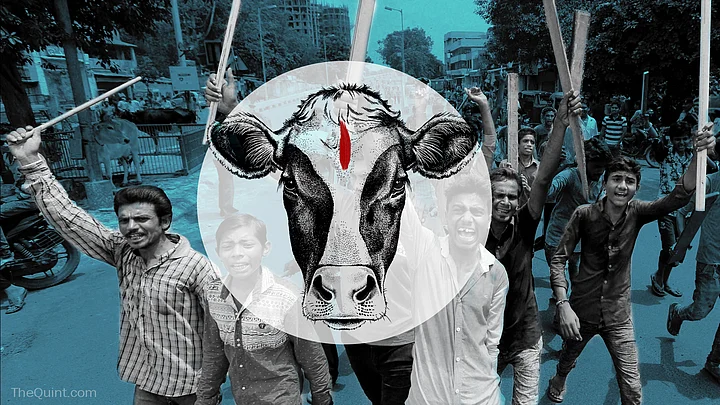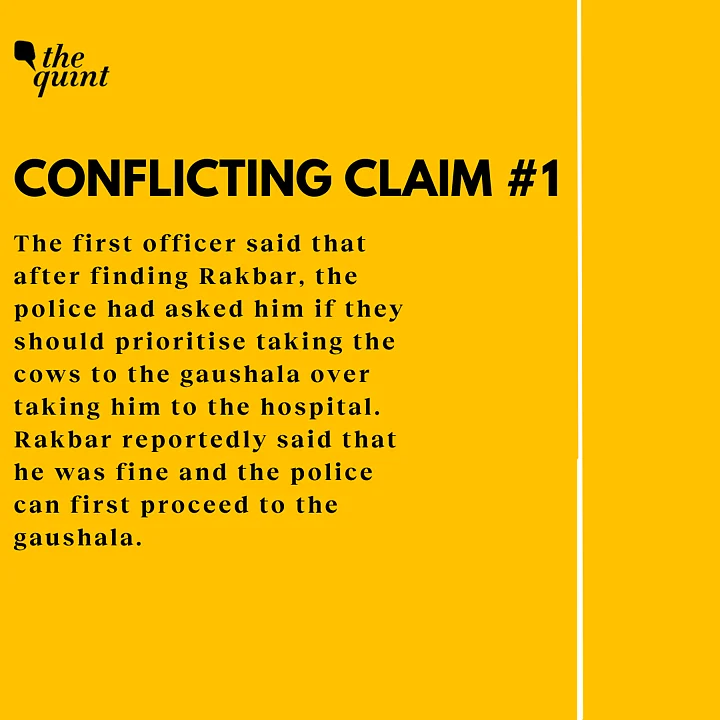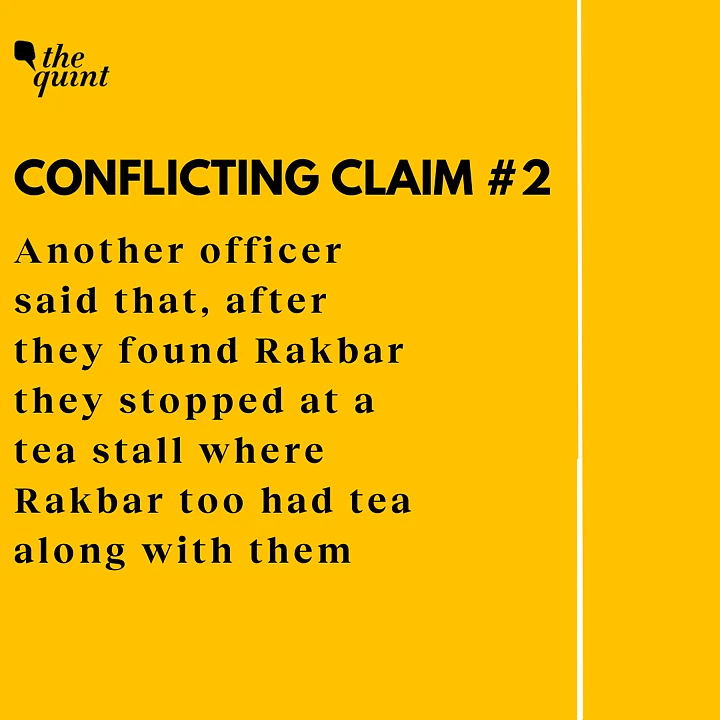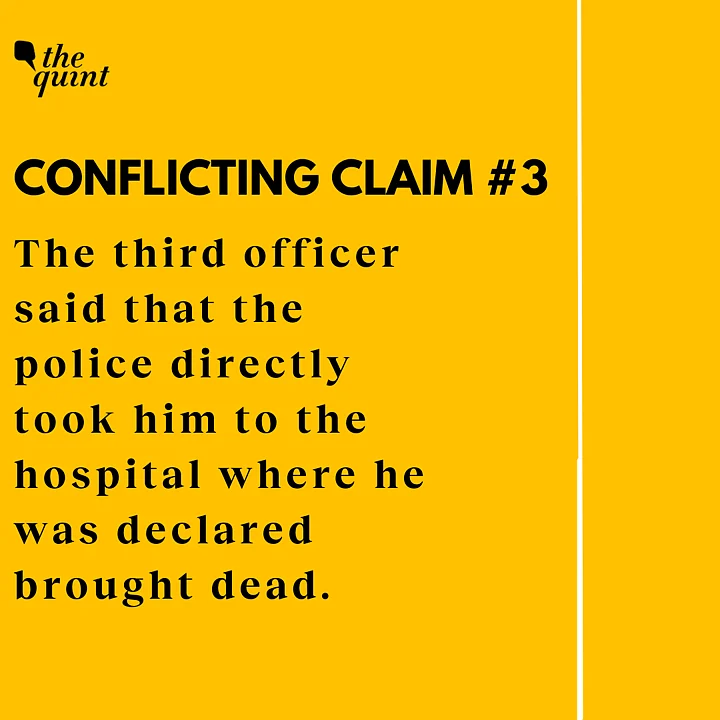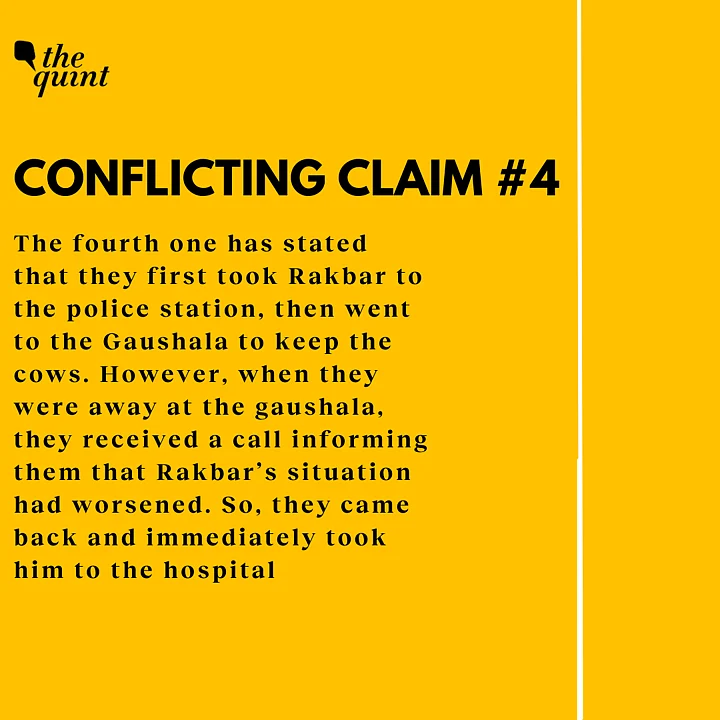(Ahmad Ibrahim is a lawyer based out of New Delhi. The following is an as-told-to account, recorded and written by The Quint's Rohini Roy.)
Putting an end to a trial that went on for five years, an Alwar court recently convicted four men and acquitted one in the 2018 Rakbar Khan lynching case.
Self-proclaimed 'Gau Rakshaks' had in July 2018 allegedly thrashed 35-year-old Rakbar in Rajasthan's Alwar on the suspicion that he was smuggling cattle along with his friend Aslam Khan.
While Aslam managed to escape, Rakbar sustained grievous injuries and was dead before he reached the hospital.
In its verdict delivered on 25 May, the court sentenced the four men to prison for seven years on charges of culpable homicide not amounting to murder (IPC Section 304) and wrongful restraint (IPC Section 341).
Additional District and Sessions Judge Sunil Kumar Goyal, however, cleared the accused of murder charges.
This has stirred up a significant debate over the appropriateness of the punishment handed down to the accused.
Nasir Ali Naqvi, one of the public prosecutors in the case, told the media: “They should have been convicted under IPC 302 (murder) too.”
Meanwhile, Rakbar’s wife Asmina added:
“The main accused has been acquitted while the others have been given only seven years – this should be increased. This is not justice. My husband was murdered by them.”
In light of this, it becomes essential to critically examine not just the verdict but the entire trial that led up to it.
What Happened?
The only public witness to the case was Rakbar’s friend Aslam. However, he changed his statement four times during the investigation, according to the judgment. His version of the sequence of events then, could no longer be relied upon.
According to the prosecution, the police received a call from Naval Kishore, the Vishwa Hindu Parishad (VHP) leader, who has now been acquitted.
Kishore, the prosecution claimed, told the police that two individuals involved in an alleged illegal sale of cattle had been beaten up. He is then said to have come to the police station and guided the police to the exact spot where Rakbar was lying.
On reaching the spot, the police found the four convicts: Dharmendra Yadav, Paramjeet Singh, Vijay Kumar, and Naresh Kumar. Rakbar was also found, lying there covered in mud.
When the police approached Rakbar, the prosecution claims, he told them that he was carrying out an 'illegal' cattle trade along with his friend, as a result of which he was allegedly stopped by these people and thrashed.
The prosecution has said that he pointed to each of the four men, took their names and then the police took him to the hospital, where he was declared brought dead.
Contradictions in the Police Statement
While that is the prosecution’s version of what happened till the police found Rakbar, the police’s contradictory statements during cross-examination about what happened after that, muddle up the entire case.
Even when the case had just come to the fore, key questions had emerged about the role of the police.
Here are four different versions communicated by four different police officers involved in the case:
The first officer said that after finding Rakbar, the police had asked him if they should prioritise taking the cows to the gaushala over taking him to the hospital. Rakbar reportedly said that he was fine and the police can first proceed to the gaushala.
Another officer said that, after they found Rakbar they stopped at a tea stall where Rakbar too had tea along with them
The third officer said that the police directly took him to the hospital where he was declared brought dead
The fourth one has stated that they first took Rakbar to the police station, then went to the Gaushala to keep the cows. However, when they were away at the gaushala, they received a call informing them that Rakbar’s situation had worsened. So, they came back and immediately took him to the hospital.
These four contradictions not only fail to establish a definitive narrative but also make it difficult to rule out the possibility of custodial torture or an alternative cause of death.
So, Should The Four Have Been Punished For Murder?
To understand this, it is crucial to understand the difference between culpable homicide not amounting to murder (the offence the convicts have been charged with) and murder (the offence that the prosecution wants the convicts to be charged with).
For instance, I fire a bullet at a tree in the woods. But on firing, the bullet deflects and hits someone standing on the right side of the tree. My intention was to shoot at the tree but instead the person died. So, this will be culpable homicide not amounting to murder because although I did kill the person, I had no intention to kill them.
The Alwar court, in the order, reasoned that while the four accused did beat up Rakbar, there was no intention on their part to kill. This, the order says, is cemented by the conduct of the accused after the incident:
1) If the accused had intention to kill, they would have escaped from the spot
2) They would not have called the police
3) They would not have aided the police in taking Rakbar to the hospital
4) They would have used sharper objects like a sword instead of a lathi to hit Rakbar, and would have hit him on the head
The Error On The Part Of The Prosecution
The most obvious question that arises here is, what if the accused themselves called the police and did not flee to avoid suspicion? The answer to that is yes, that is a very strong possibility, as is the possibility of custodial torture.
But since the prosecution did not do a good enough job of ruling out or proving either of those possibilities, the four accused could not be charged with murder.
The existence of these parallel narratives are further proof that there is a hole in the story of the prosecution, because this translates to the fact that they haven’t been able to answer all the questions arising from the case beyond reasonable doubt.
Since the prosecution could not establish that the four and only those four were with him and were responsible for the events leading up to his death, the problem then lies not with the judgment but with the prosecution’s version.
Naval Kishore too was acquitted because of the same reason - there was a dearth of “clinching evidence” against him and his role in the incident could not be proven beyond reasonable doubt.
While deliberating on a case, the judge is not required to be emotional and is only allowed to look at the witness statements and the evidence that has been brought on record.
In this case, the evidence and witness statements have been murky and muddled, thereby leading the court to charge the accused with Section 304 (culpable homicide amounting to murder) instead of murder.
One glaring Concern Remains...
What the court did know definitively is that the four men were present and did beat Rakbar up on suspicion of cattle smuggling. When that has been proven during the trial, the court should have sentenced the four to the maximum punishment under section 304 i.e. at least 10 years instead of seven.
The seven year sentence flies in the face of the guidelines laid down by the Supreme Court to curb lynching. In a 2018 verdict (Tehseen S. Poonawalla vs Union Of India) the top court had noted that the trial court must ordinarily award the maximum sentence under the provisions of the IPC in cases of cow vigilantism.
The reluctance to award maximum punishment remains a glaring concern and must be appealed by the state at a higher court.
Technically because of the contradictions and omissions and the manner in which the investigation was done, and the trial unfolded, the judge is correct about not charging the convicts with murder but the punishment should at least have been the maximum under the offence the accused have been convicted for.
(This is an opinion piece. The views expressed above are the author’s own. The Quint neither endorses nor is responsible for them.)
